Indonesian Archipelago Series-8: Yogyakarta, city of culture
This is Andong/Delman: Yogyakarta traditional chariot with a kusir (coachmen) and a horse to pull your chariot. The chairman is wearing the Javanese traditional outfits and ready to bring you around Malioboro street, Keraton Yogyakarta, alun-alun Kidul to discover Yogyakarta.

Yogyakarta is one of my favourite places in the whole world. If I have to go there once a month for example, I will embrace it happily. Not only special in terms of its governmental system that makes it Daerah Istimewa Yogyakarta or Special Region of Yogyakarta because it is ruled my a monarchy lead by a Sultan, Yogyakarta is one of Indonesia's cultural center. As a complex of kingdom since 18th century, Yogyakarta is an example of success in preserving its traditional heritage until today, where students all over Indonesia go there for studying in Universitas Gadjah Mada are doing research and modern studies. Yogyakarta also served as Indonesian capital in the urgent case of Indonesian War of Independence for two years (1946-1948).
People of Yogyakarta is famous of being calm (compared to East Java people) in terms they way they speak but once they point out on something it can be a really heavy sarcasm. I personally think this is really the habit of Javanese people I am trying to generalize where people can not say no directly and are not used to deliver their point directly because of politeness. However, as a result it may become grudging and kind of an emotional burden for both parties because the unability to point out their arguments directly. Well, this can also be spot easily when you see their nature to be mostly in a chill and calm mood in doing everything. I feel like this ambience really made me feel like holiday whenever I am in Yogyakarta.
The museums art art galleries
I did this travel alone and met some friends there. My first stop was an art gallery called ruang MES 56. I went there with Widi and Parama, my pals from college. They interact a lot with the artists and owners while I was just strolling around to see the photographs, paintings and installation. The artists were so friendly and treat us like long-time friends that casually visit their houses. They also have library, seminar rooms and workshops for artists in South East Asia. I really appreciate them and I hope they will keep surviving and become the movement of Indonesian modern art. Along the way we found a lot of beautiful gravity that leads to other little galleries and restaurants. It was a short visit because they needed to go back to Surabaya soon. I was staying in a hotel in the middle of Malioboro street. This famous street contains thousand of street shops selling food, souvenirs, and sometimes live art performances. I really reccommend you to look for a place to stay in the heart of Malioboro so you just need to walk to visit important landmarks around Malioboro.
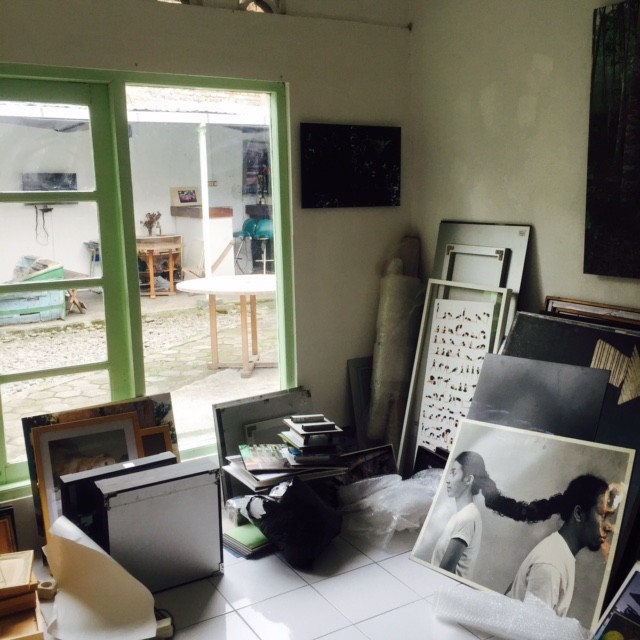

The next day, I was picked up by my old gold friend, Fahmi to go to Mount Merapi Museum which is at the north edge of the city. This museum is truly huge. At the entrance you will be welcomed by a giant replica of Mount Merapi which has simulation of eruption. There were lots of students having a field trip there and trying the simulation. In the first part, you could find the general knowledge of geology, eruption and the characeristic of Merapi Mountain. Merapi is one of Indonesian most active stratovolcano that erupts regularly. The biggest one was the one in 2010 which has impacted tens of thousands inhabitants due to many seismic earthquakes preceeding the eruption. It was a scary moment at that time. In addition to this Merapi, Yogyakarta is also included in Ring Fire zone that makes it prone to experience earthquake. So it is like a double combo. On the second floor we could see the short film of the eruption where the geologist have tried to do their best to predict the earthquake and evacuate people with the government. We could see the animals running down from the mountain forests as it was the end of the world. Some locals refused to be evacuated because maybe they prefer to die in their own home so a lot can not be saved. The saddest part of the museum are all the furnitures, clothes, vehicles that are destroyed by the lava of the eruption. I was really having goosebump everytime I saw this thing. At the end, we could try an earthquake simulation where it is a 3x3 m2 fake living room where you can press a button and they make fake earthquake. I think this is really good to bring more awareness to people like in Japan.

Not far from this museum is the most famous Yogyakarta museum: Ullen Sentalu. This was my 3rd time visiting the museum and I was still happy. Unfortunately, we were not allowed to take pictures inside. The museum was owned by a family and now managed by a private fondation. It has a very unique architecture and serves as cultural art museum of Yogyakarta that tells you the story of important kingdom families. They have superb and high quality paintings, photographs and also the preserved letters and the aristocratic attires. The special part is you are guided with very detailed explanation and they also gave you traditional drinks in the middle of the trip. At the end, you can also chill in a very nice cafe called Beukenhof restaurant which has a very serene ambience and beautiful view of the museum area. Along the entrance of the museum you can find lots of local women selling mangoes. They were really strong, beautiful and hardworking.
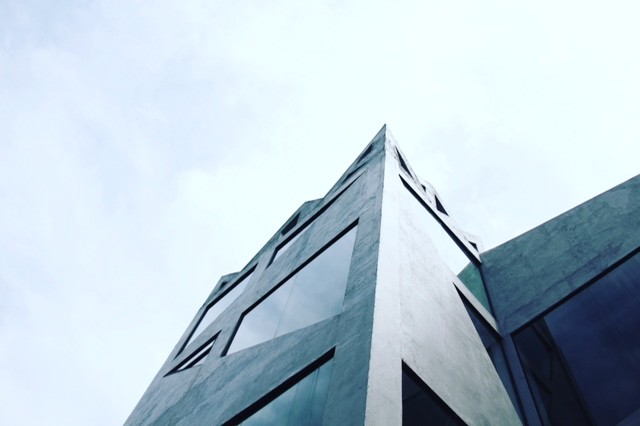
After having lunch in a traditional fried chicken restaurant which I forgot the name but was so famous for Universitas Gadjah Mada students, we headed to our next museum destination: Affandi Museum. It is located just above the Gajah Wong river bank with its interesting architecture, the one and only eccentric building in the whole city. The main concept of the building is to create banana leaves if you see them from above. Affandi is one of Indonesian important artists that paint in many genres but mostly expressionism and impresionisms. He died in the age of 83 and was burried inside the museum complex just beside his wife. We could also have a glance to his bedroom which is located in the 2nd floor of a bungalow facing the river bank. You can tell from this building that he is reall an outstanding human being. Here in the museum we had hundreds of his paintings from his earliest until last works. There were group of hundreds of students being presented by the guide about Affandi biography and career. In the second gallery part, there was a drawing class for children and a lot of works by Affandi's daughter: Kartika, who is also a painter now.
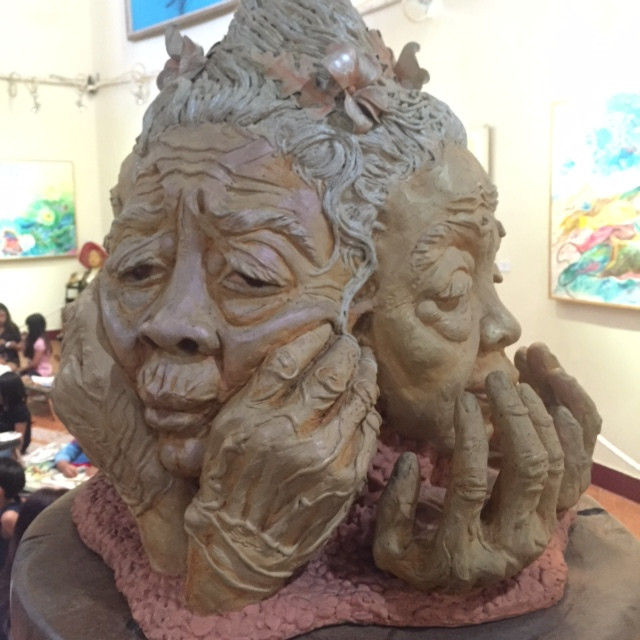
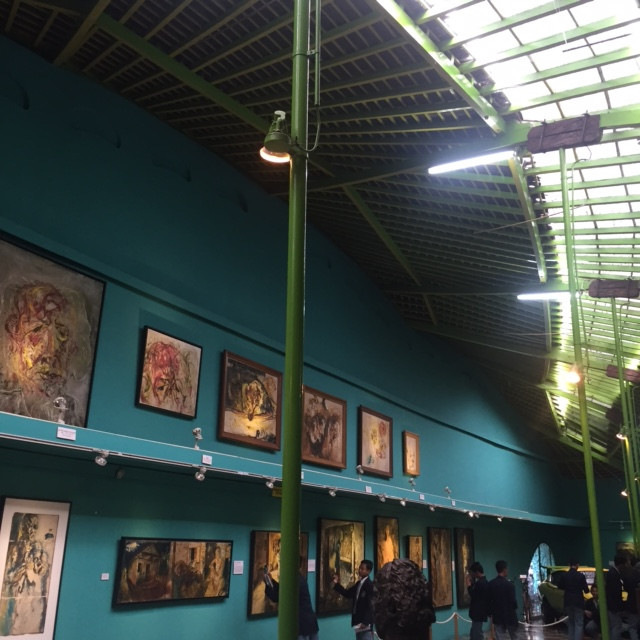
Next, I went to Sonobudoyo Temporary Museum and cinema and art gallery where we could see an indie film. We had to take off our shoes and change it with local slippers to go in which gave you special experience. Next to the cinema is the exposition gallery. At that time, we were lucky to see an exhibition from several modern artists mostly complaining about global warming. I was happy to see many young volunteers and visitors filling in the exposition.
Malioboro street
Closing the day would be perfect by strolling along Malioboro street and enjoy the street food. I would strongly reccommend you to buy the famous springroll (lumpia) Samijaya which is a very modest stall with hundreds people queuing near the mall of Malioboro. Trust me, the long queue will be worth the heavenly taste you got by the special garlic sauce that enhance the springroll taste. Next, you can also try simpe gorengan which are mostly fried street food consists of chicken intestines, quail eggs, tempe, tofu and a lot more. Another thing not to be missed is the new trending bakpia: Bakpia Tugu. Unlike the classic bakpia which is harder, this one is steamed so it becomes so smooth and I don't know, it is just so delicious, please trust me. Bakpia pathok is traditional bite of Jogjakarta influenced by Chinese sweet moon-cake dough filled with beans. If you have never tasted one, please take both the Bakpia Pathok and Bakpia Tugu to compare their wonderful taste. Some streeet performances can be found along the street which can be traditional dances, music shows using cooking utensils or other unpredicted things or pantomimes. I also found several couples of handicaped person singing and playing electric organ. This really touched me on how hard they work and how long they work each day.
You can also shop little souvenirs like wooden bracelets, keychains, Yogyakarta T-shirt and also visit the famous Mirota batik gallery for bigger options of traditional souvenirs. The famous House of Raminten cafe was also not bad but also not outstanding, here you can order traditional food with interesting vintage interior. I have to tell you that we Indonesian love to eat outside and look for cute and beautiful place to take pictures. Raminten is a character played by Mirota group member which also owns the batik gallery and a cabaret show on top of the gallery. The cabaret show was beyond perfect. I have never stayed to see until the end but they were really professional and entertaining. Definetely another color of Malioboro that you have to experience.
Keraton Yogyakarta and Taman Sari
There won't be an end to a story about Keraton Ngayogyakarta Hadiningrat, which is a residence complex of Sultan of Yogyakarta and the family. This complex is really majestic and vintage in the same time. I went here with my old choir mate, Puyu who was also a student in UGM. It has a huge field called Alun-alun Kidul where there are the famous mystical twin Banyan trees. In the evening, however, you will be able to rent a glowing paddling car which is actually paddled like a bike with your friends and family and cycle around the alun-alun with this loud music and bright neon light covering your whole fake car. In total there might be 50 fake cars there. The palace complex are bordered by white walls. Some parts of the Keraton itself are opened for public which are the pendopo or pavillion area where you could see the traditional dance with live gamelan accompany. Gamelan is a traditional music instrument played by group of people playing Javanese gending and a lead singer who is called Sinden. I was so lucky to be able to see the performance which was not everyday.
The museum parts gave me amazement yet a chilly feeling whenever I saw the old mirrors, paintings and the aristocratic clothes. It feels that the entire kingdom is still there watching at us. There are several mystical stories about Keraton and I really appreciate that. This kingdom is surely not the one you found in fake fairy tale, this is real kingdom. You can really feel the authority once you enter the complex. The complex itself is guided by the keraton guards which have worked there since they were kids as the servants of the kingdom (abdi dalem). Here you can also find the old chariots that were really used in the past to transport the kingdom family. Now, the kingdom was lead by Sultan Hamengkubuwono X, preceded by Pakualam VIII. Here is the website of the Keraton Palace https://www.kratonjogja.id/# for you to also find some interesting cultural agendas for public. Please wear polite and closed clothes if you want to visit the Keraton. Here, I was lucky to spot a young abdi dalem strolling in the royal palace complex, well I hope he is real and not just a kid disguised by his parents.
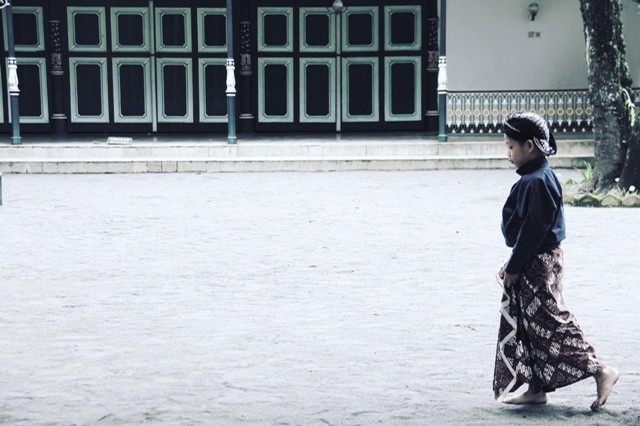
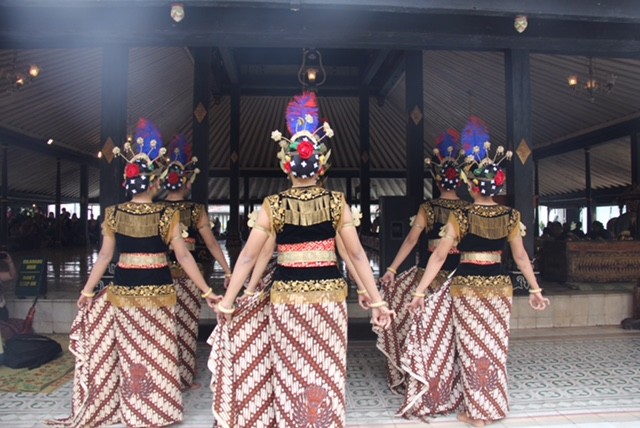
Not far from the main palace is the Taman Sari garden, which is the royal garden of Keraton Palace complex. You will be welcomed by an outstanding gate of Gedhong Gapura Hageng which is a white sculpure gate. It was unbelievable to see many huge bathing ponds and imagining that it was for the princesses in the past. They have huge stone wall as the place for change and a tower at the top. Not only for bathing purposes, it is believed that this place was also used for the purpose of mediation, defense and hiding place in the past. When you walk down the defense wall you will be connected to the underground tunnels leading you to the famous well Sumur Gumuling where there are four stairs meeting in the center of the well. It was indeed so magical and like travelling in a secret tunnel below a majestic kingdom. There were many abdi dalem explaining us about what it was in the past. Around Taman Sari complex also are the traditional batik village where you can see houses painted as a cultural village and women selling the batik they made. When North Sumatra has their woven tenun cloth (you can see this in my previous post of Medan), here, it is the batik.
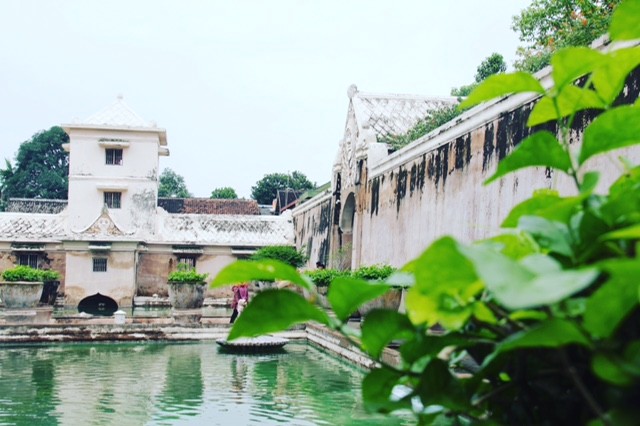
Vrederburg Fort
As I have mentioned several times, Indonesia was under Dutch colonialization for about 5 years until we declared our independence in 1945. Therefore, our laws, architectures until our sewerage system are sometimes derivative forms of the colonization. This fort for instance, is an ex dutch fortress and military complex during the war. During the Japanese occupation, this fort was also used as a prison. Now, it serves as a museum with a lot of old photographs, dioramas also historical objects. At the end of the four different areas, you will be able to go to a war simulation where they put fake soldiers pointing guns at you but there was no sound or movement installed yet maybe considering the visitors age ranges that can range from super young toddlers to seniors. Just opposite the fort is the central post office and bank which also has Dutch-influenced architecture. From this area you just need a 10 minutes walk to Malioboro street.
Ratu Boko Temple
The last stop was the Ratu Boko temple, in the south of Yogyakarta central to see the sunset. This place is famous recently because it was featured in a second film of Ada Apa dengan Cinta also starred by our iconic Dian Sastrowardoyo and Nicholas Saputra, who met his long-last love in Yogyakarta and had a spontaneous trip together. After this film, there are hundreds of travel agent creating guide to go to the spots where they go in the film, I know, we are all crazy here. The temple is believed as the product of Syailendra dynasty and consist of several parts: the gate, Candi Batu Putih, Candi Pembakaran, Paseban and Pendopo. The gate was indeed so iconic and amazing as the sun goes down as its background view. Candi Pembakaran is a square with a square hole probably for crematorium purposes in that era. If you continue your trip to Candi Prambanan, which is famous because of Roro Jonggrang legend, so this Boko is from the name of the King in the Roro Jonggrang story. Unfortunately, it has been awhile ago that I visited Candi Prambanan and Candi Borobudur, one of Indonesian gem that is proposed as 7 World's Wonders besides Komodo Island (also in previous post). I wish I could revisit this place to have more actual explanation about both of these temples. My list is also to experience the most important Buddhist celebration: Waisak day to celebrate the most important points in Buddha's path which took place in Candi Borobudur. The monks will have a tour with the Buddhist people carrying orange latterns and reciting mantras. This event is opened for public and at the end you will fly your lantern to the sky well I do not know if now it still okay to fly lantern. All these temples are the leftovers of Hindu and Buddha kingdoms period in Indonesia.
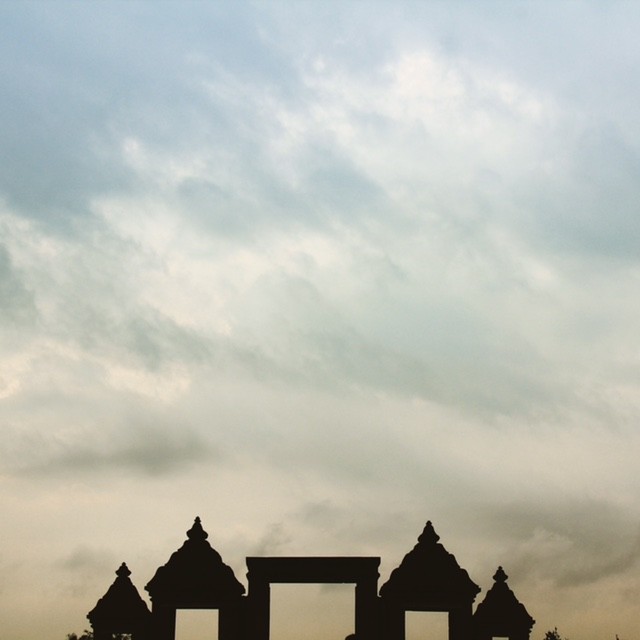
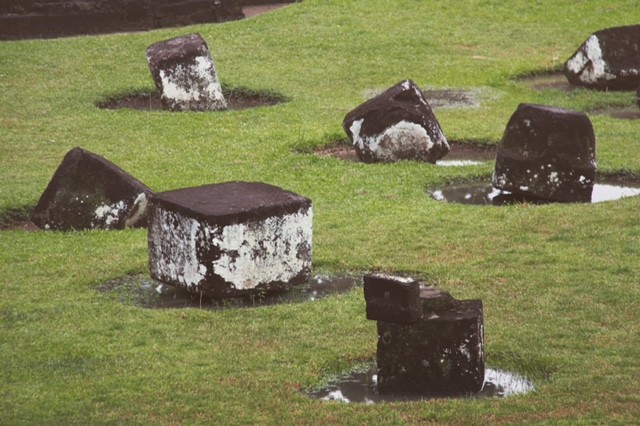
To close our trip in Yogyakarta, we went to the special satay (grilled meat in skewer with special sauce) called Sate Klatak, also famous thanks to the film I mentioned before. This satay is made from mutton meat, grilled in an open fire with a technique called Klatak in javanese language. It has very strong spice, tender structure and amazing local place to sit on the floor and just eat there. Together with the satay you can have rice, tongseng and also gulai (curry soup). We tried Sate Klatak Pak Bari which is quite far from Malioboro district because it is inside Pasar Gede (a traditional market). There is nothing else there at night except the satay place so do not expect to stroll around. However, the taste and experience is worth the distance.
Summary of food that you have to try in Jogja:
1) Gudeg: stewed unripped jack fruit with coconut milk and palm sugar together with amazing chicken.
2) Sate Klatak
3) Bakpia Tugu
4) Lumpia Samijaya
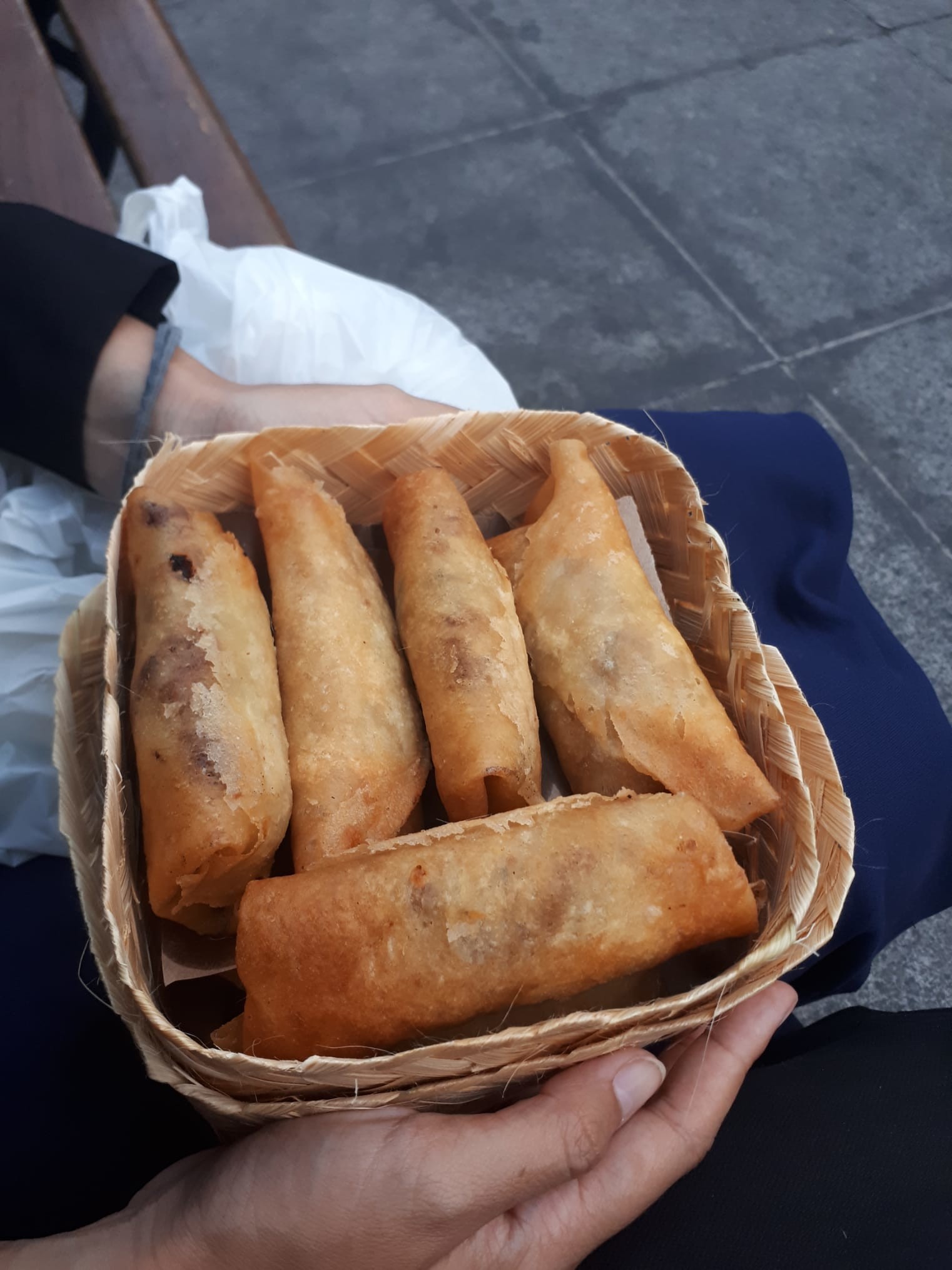
5) Tempo Gelato: famous gelato with cheap price in Prawirotaman area
There would not be enough posts for Yogyakarta, and even after my 5th visit I feel like I have not really explored the whole Yogyakarta. Definetely a place to consider besides Bali.
Photo gallery
Want to have your own Erasmus blog?
If you are experiencing living abroad, you're an avid traveller or want to promote the city where you live... create your own blog and share your adventures!
I want to create my Erasmus blog! →




























Comments (0 comments)